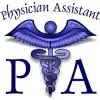Practice Agreement Effective January 1, 2020
- March 27, 2020
- CAP Risk Management and Patient Safety Team
If Physician Assistants (PAs) — a type of advanced practice professional — are part of your practice, then you need to know that the rules and regulations for the supervision of PA’s were recently changed. Senate Bill No. 697, Physician Assistants: Practice Agreements: Supervision, was signed on October 9, 2019 and took effect on January 1, 2020.1
According to SB 697’s sponsors, statutory limitations were overly burdensome and duplicative of other protections built into the healthcare system. SB 697 and the related Section 3500 of the Business and Professions Code references, the “growing shortage and geographic maldistribution of healthcare service” and its purpose of “encourage[ing] the effective utilization of the skills of physicians and surgeons . . . by enabling them to work with qualified PAs to provide quality care.” The California Medical Association stated that “SB 697 allows for more autonomy to each medical practice as to their functional relationship with their PAs.” By removing the perceived burdens and duplications, SB 697 places more control in the hands of physicians and surgeons over the methods of supervision of PAs.
You are encouraged to read the entire text of SB 697, but there are several changes of note in SB 697 that may affect your practice and have risk management implications:
- Multiple physicians and surgeons are allowed to supervise PAs compared to the prior requirement that a single physician supervise a PA. The ratio of one physician for every four PAs remains the same.2&
- The PAs' medical records no longer require review by a supervising physician.
- The supervising physician(s) must be available by telephone or other electronic means and no longer needs to be physically available.
- The supervision agreement for PA’s will be changed from a delegation of services agreement (DSA) to a “practice agreement.” Multiple physicians or an agent for the staff of the physicians or healthcare system can sign the practice agreement. DSAs in effect prior to January 1, 2020 will remain in effect.
It is hard to predict how some of these changes will affect risk, claims, and liability in 2020 and beyond. For example, in the event of a claim, it is likely that plaintiff attorneys will argue that each of the signatories to the practice agreement (physicians or/and healthcare systems) are vicariously liable for the acts and omissions of the PA. Therefore, it is never too early to start the discussion, so here are a few thoughts to help you anticipate issues and put risk reduction processes and methods in advance.
The shift from single-physician supervision to multiple-physician supervision is a significant shift with new risk issues. There should still be a specific physician in charge and available at all times. You do not want a lapse because Dr. X thought Dr. Y was supervising the PA. Clear coverage processes and schedules are one way to prevent lapses.
The change from “physically available” to available by phone or electronic means, in conjunction with the elimination of the requirement for record review, creates additional risks. PAs still require supervision. In fact, a strong argument can be made that the relaxing of forms of supervision implies that other robust and specific processes, policies, and procedures, and guidelines for PAs would be indicated to prevent a decline in the quality of supervision. Moreover, the elimination of requirements for chart review and physical availability does not mean that they cannot be included in the practice agreement.
We are in a time of rapid healthcare evolution and change. It will be interesting to see how AB 697 will affect the delivery of healthcare and the risk management changes that will come with. If you have any risk issues that arise related to PAs or any other issues, you are encouraged to contact the Physician Assistant Board of California, review the SB 697 informational bulletin3, or consult with an attorney. If you are a CAP member, be sure to call the CAP Risk Management Hotline at 800-252-0555. For more information about PAs, you may review the CAP Advanced Practice Professionals Focused Review.4
Questions or comments related to this article should be directed to [email protected].
1Full text of SB 697 with analysis can be found at http://leginfo.legislature.ca.gov/faces/billNavClient.xhtml?bill_ id=201920200SB697.
2Within a general acute facility, the practice agreement must establish policies and procedures to identify the supervising physician and surgeon.
3Department of Consumer Affairs. Physician Assistant Board. SB 697 Information Bulletin at https://pab.ca.gov/forms_pubs/ sb697faqs.pdf
4CAP’s ‘Leveraging Data: A Focused Review of Advanced Practice Professionals” can be found at http://www.capphysicians.com/articles/new-data-dive-study-leveraging-data-focused-reviewadvanced-practice-professionals.
